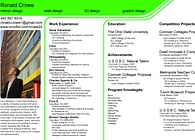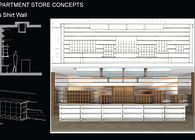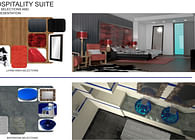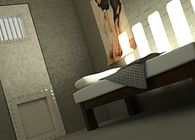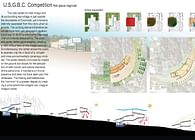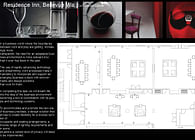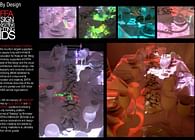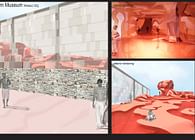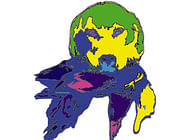
To carefully study the life and work of Luis Barragan as well as the
different implications of relative literature including authors such as
Sylvia Lavin (Form Follows Libido) and George Bataille (Visions of
Excess). Using ideas derived from these various sources, the gallery
concepts come together as a reinterpretation and analization of Barragan
as a person and as a designer.
Argument:
The galleries progress from interior to exterior relationships derived
from Barragan’s examples. There is a certain liberation of Barragan
from his monastic architecture exaserbating his interior techniques,
and finally a complete transformation of his body into a sensual element
of his exteriors. As Barragan’s repression is found in his controlled
architecture, his true expression is displayed in the exhuberant
expansions of his gardens.
Room 1
Barragan used fenestrations to have complete control over how
much light could enter a room, and what direction in which it projected.
As a mechanism to create a sanctuary he was able to provide
solitude.
Gallery affect: ability for every individual who enters the space to
customize their own lighting affect through the opening and closing
of panels.
Digital technique: arrange fenestration inspired by jazz music and
mondrian. Opening panels result in a flooding of the space with light
Room 2
Barragan used reflective materials to enhance the ability to increase
his peripheral view, while simultaneously controlling line of site.
Examples of exterior views from the Gilardi House include
pools of water which reflect an “object” wall as well as surrounding
forests.
Qualities and Affect:
Disorientation, loss of horizon, mulitple reflective affects including
polished surfaces and liquid reflection. Floor is filled with a thin
pool of water.
Analog technique:
Use of printed images of trees with added color representing the
blues and greys of the sky, with backlighting. Reflective materials
placed on the ground and back wall to promote disoriented affect.
Digital technique:
Mapping of images and creation of customized materials, application
of reflective walls and liquid flooring. The lights are multiplied
with a low wattage and low intensity.
Room 3
Carefully placed relics and other religous symbols represent Barragan’s
strong ties to spirituality. This quality is also what causes his
repression and unwillingness to provoke himself.
Atmospheric Qualities and Affect:
Excessive use of gold materials overwhelm the viewer, billowing
fabric-like walls are interpreted as the garments of angels and
saints
Analog Technique:
Molding wax over the texture of a heart to create interior skinlike
surface, melting of the wax onto the wall, application of
glitter for affect. Building lattice to represent confessional and
incorporate another type of control utilized by Barragan.
Digital technique:
Heightfield image of a wax model, developed using contour line
extraction/projection, bending, control point manipulation, and application
of materials.
Room 4
The last gallery explores Barragan’s
liberation and his becomming a sensual element of the gardens.
From childhood to adulthood, his intimate connection
to nature became lost in his repressed monastic architecture,
and this gallery serves as the reintroduction to his relationship
with these conditions.
Atmospheric Qualities and Affect:
The object which represents Barragan is fully consumed by
the walls which are the gardens.
Analog Technique:
Plaster mold of heart, silicone relief taken from plaster mold.
Digital Technique:
Heightfield of model with applied material of Barragan photo,
rebuild function to smooth Barragan as object.
Status: School Project
Location: Columbus, OH, US
